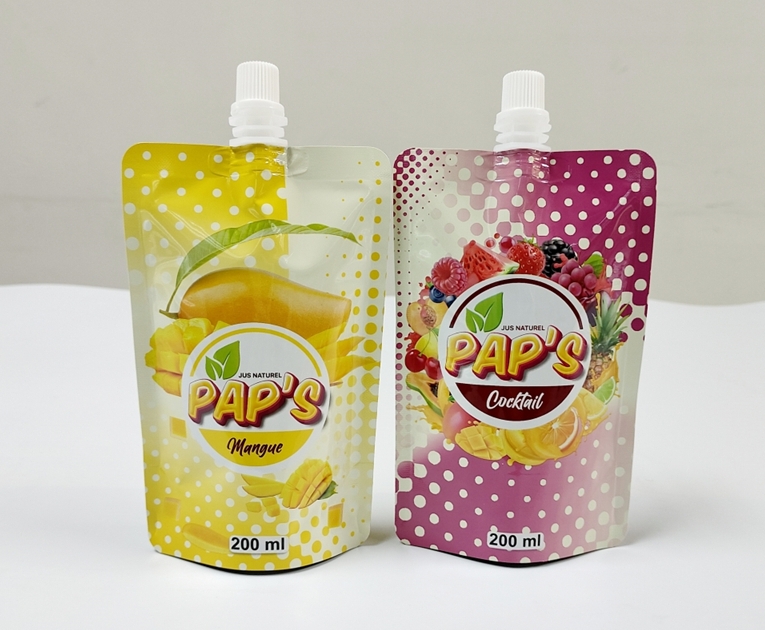Liquid packaging bags are breaking through traditional boundaries, opening a new era of “one bag for multiple uses” through the integration of material science and intelligent technology:
Scenario 1: Functional revolution in the food and beverage industry
Self-cooling packaging: built-in CO₂ compression capsule, 60 seconds after pulling the label to cool down 15℃, suitable for outdoor sports drinks;
Anti-counterfeiting and traceability integration: UV invisible code + blockchain technology, consumers can scan the code to verify the authenticity of the product and obtain origin information;
Microwave heating bag: using CPP (cast polypropylene) heat-resistant layer, support direct microwave heating for 3 minutes.
Scenario 2: Cost reduction and efficiency improvement in the industrial field
Corrosion-resistant chemical bags: PTFE (polytetrafluoroethylene) inner layer withstands strong acids and alkalis, replacing metal barrels to transport hydrofluoric acid;
Intelligent early warning packaging: printed strain sensors monitor bag pressure in real time, and send early warning signals 6 hours before leakage;
Bulk grain and liquid transportation: 1-ton flexible container (FIBC) reduces 90% of packaging waste and is recycled more than 50 times.
Scenario 3: New medical and emergency infrastructure
Sterile plasma bags: The light transmittance of multi-layer co-extruded film is greater than 90%, which is convenient for rapid detection of plasma quality;
Modular water bladders: Post-disaster emergency water supply system, a single bag can be folded to store 20L of drinking water, supporting rapid delivery;
Vaccine cold chain packaging: Phase change material (PCM) coating maintains 2-8℃ for up to 120 hours, breaking through the “last mile” problem.
A case of a lubricant brand shows that after using smart liquid packaging bags:
Filling efficiency increased by 40%, and labor costs saved by 250,000 US dollars/year;
Transport damage rate dropped from 1.2% to 0.03%;
The repurchase rate of end customers increased by 33% due to improved convenience.

